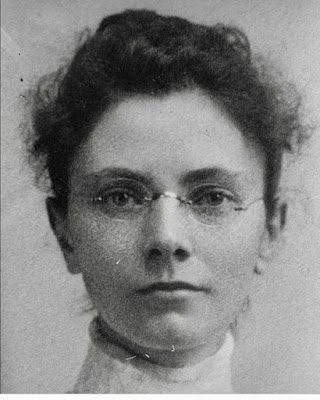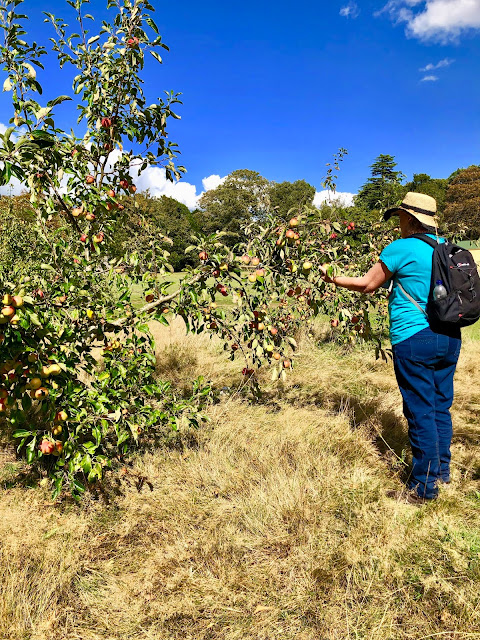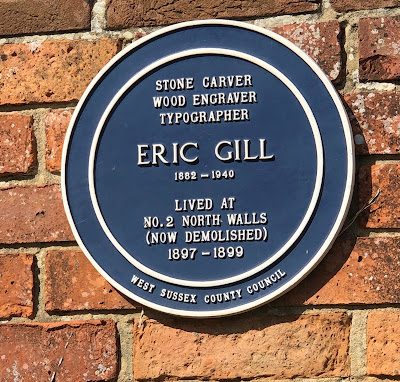Today we embark on the last leg of the West Sussex Literary Trail.
We go by car to Chichester and are then taken by taxi to our starting point in Charlton, the gastropub
The Fox Goes Free.
This village has a Palladian hunting lodge, Fox Hall, dating from 1730 which became the focal point of the Charlton Hunt mentioned on the previous blog post. Although the building's exterior is plain, it belies the stylish and elegant interior and it is now a Landmark Trust property available to rent here
It's a short walk from here to the village of Singleton which is where William Cobbett had his breakfast in 1823 after setting off early one morning for his consitutional from Duncton. He decided to go no further but did remark that he had "seen no wretchedness in Sussex.... and as to these villages in the South Downs, they are beautiful to behold."
Singleton lies in the Levant Valley. We cross a public road to pass under an archway, leading to the Church of the Blessed Virgin Mary, with its Saxon nave and tower.
This village has a Palladian hunting lodge, Fox Hall, dating from 1730 which became the focal point of the Charlton Hunt mentioned on the previous blog post. Although the building's exterior is plain, it belies the stylish and elegant interior and it is now a Landmark Trust property available to rent here
It's a short walk from here to the village of Singleton which is where William Cobbett had his breakfast in 1823 after setting off early one morning for his consitutional from Duncton. He decided to go no further but did remark that he had "seen no wretchedness in Sussex.... and as to these villages in the South Downs, they are beautiful to behold."
Singleton lies in the Levant Valley. We cross a public road to pass under an archway, leading to the Church of the Blessed Virgin Mary, with its Saxon nave and tower.
 |
| Church of the Blessed Virgin Mary, Singleton |
After passing through the churchyard we leave the village behind
and begin the arduous uphill climb
 |
| Are we nearly there yet? |
which shortly gives us magnificent views of the Goodwood racecourse. Ascot and Goodwood are the only two privately-owned courses in the country. The 3rd Duke of Richmond bought the land in 1765 for £48,000 which nowadays comprises mansion, camping and caravanning park, golf course, car racing track and private airfield as well as the beautiful racecourse itself. Daniel Defoe of Robinson Crusoe fame said that there were "a great many fine seats of the nobility and gentlemen of the country, as the Duke of Richmond's seat at Goodwood". In 1915 DH Lawrence and Eleanor Farjeon walked from here to Chichester, Eleanor developing severe foot blisters on the way, which decided her to take the train back again next day!
Slightly south and to our right is the Weald and Downland Open Air Museum which is certainly worth a day of exploration all to itself. 50 acres of countryside house a collection of vernacular rural buildings from the 10th-19th century, such as barns, shops, houses and mills, which if left on their original sites, would almost certainly have been demolished. Christopher Fry 1907-2005, the poet and playwright (who was actually born Arthur Hammond Harris) described it as "A quiet coming together of centuries in one place." Fry lived at nearby East Dean and died in Chichester. 'The Lady's Not for Burning' was his most performed play and inspired British Prime Minister Margaret Thatcher to declaim, "You turn if you want to — this lady’s not for turning," at the Conservative Party conference in 1980.
The Trundle is 206m above sea level and the climb up is hard work. 'Trundle' comes from the Old English 'Tryndel' meaning 'circle'. It was an Iron Age hill fort built on a Neolithic causewayed camp which dates to 4000BC. Its main purpose was to guard Chichester Harbour. Once known as St Roche Hill, it was named for the 14th C chapel which was built there and has now disappeared. For an aerial view and information on the folklore attached to the hill see here.
We follow a grassy track up to the summit
and skirt round the highest rampart until we are met with the most wonderful views of Chichester
and, further in the distance, the Isle of Wight.
GK Chesterton, friend of Hilaire Belloc, summed up well when he said "Sussex and its timeless beauty is the place where “London ends and England can begin".
It's a relief to start the descent then, passing the Seven Points carpark and viewpoint
where the Literary Trail meets the Monarch's Way. The latter is a 601 mile trail which was said to be the escape route of King Charles II after his defeat at the Battle of Worcester in 1651. William Harrison Ainsworth (1805-1882) who was a very popular author in the 19th C wrote a novel called 'Ovingdean Grange: A Tale of the South Downs' which is centred around the King's escape.
We follow the bridleway signposted to West Dean (where there is a wonderful college for arts and crafts and beautiful gardens) and pass the Old Rubbing House where horses were rubbed down after their long climb.
It's a gentle walk downhill now with more lovely views of the Lavant Valley and a cooling breeze to refresh us.
We find the River Lavant is completely dry and weed-choked but our guidebook tells of the terrible flooding in this area and the surrounding villages in December 1993. Within a week first the A27 bypass was closed due to flooding and then the A259. The army erected a Bailey bridge over the A259 but on the A27 flooding was too severe, leaving the M25 motorway the only safe route to West Sussex. Here's how it looked today!
 |
| Dried up river bed of the Lavant |
The next settlement we encounter is East Lavant and the village cricket pitch is where we make our lunch stop.
 |
| Lunch in the shade of the trees |
Suitably fed and watered, we set off up Sheepwash Lane
 |
| Lambs were placed in a pen on one side of the river and the ewes swam across the river to get to them, while being pushed underwater by the shepherds to clean the fleece before shearing. |
Chichester is replete with literary connections. One of the most famous produced only one book in her lifetime, but it is in the top ten children's books of all time, 'Black Beauty'. For a time its author, Anna Sewell (1820-1878), lived in 17th C Graylingwell Farmhouse which later became part of the Graylingwell Hospital site. Her book was published five months before she died and she was paid £45 for it!
 |
| A young Anna Swell |
The buildings and land were sold to developer Linden Homes and following planning consultation, demolition and conversion work started in 2010 to turn the site into a carbon-neutral community called Graylingwell Park.
 |
| The cathedral spire |
and we realise that our journey is very nearly at an end, but first we want a close up view of the famous Chichester Festival Theatre. Almost adjacent to the theatre we come across Oaklands Park Community Orchard
where a sign asks us to 'feel free to pick and enjoy' the various varieties of apples, pears and plums. Keen to top up on our '5 a day' we gladly oblige!
 |
| Liz chooses her apple! |
Outside the Minerva theatre can be found a statue dedicated to the founder of the Chichester Festival, Leslie Evershed Marton.
We walk through the car park then take the underpass to reach the start of the old city Walls.
From here we have a bird's eye view of the residents' gardens below us.
 |
| Weary feet round the City Walls Trail plaque |
We emerge at Westgate and by chance spot a blue plaque commemorating Eric Gill (1882-1940).
He and his family moved to Chichester when he was 15 and he attended the Chichester Technical and Art School. It was here that he set off on the career path that was to make him a celebrated artist, sculptor, woodcarver and designer famous for his typeface, Gill Sans-serif which is known to all computer word processors.
He was a multi-talented but controversial artist, his work often seen in a notorious light nowadays when stories of his abuse of his daughters and sisters has come to light.
A small sign high up on a wall directs us to the pleasant Bishop's Palace Gardens
 |
| The Bishop's palace |
where the path twists and turns
before leading us into St Richard's Walk
and the cathedral cloisters. It's high up on the cathedral walls that we find this unusual bespectacled water spout
and this fading sundial.
 |
| Sundial on the Cathedral wall |
Many writers are connected with this city and a literary trail would be incomplete without some mention of a few of them.
Celia Fiennes (1662-1741), an ancestor of explorer Sir Ranulph and actors Ralph and Joseph, was an intrepid woman who upon deciding at the age of 23 that her health would benefit through a change of air and scenery, rode side saddle around every county of England, keeping a journal along her way. Was she the lady of the "Ride a Cock Horse" children's nursery rhyme? Certainly some suspect that the word 'fine' was a wordplay on 'Fiennes'. The journals became 'Through England on a Side-Saddle' although the book was published posthumously. She described Chichester thus "but a little Citty encompass'd with a wall" and the Market Cross " a very faire Cross of Stone like a Church or great arch, its pretty large and pirramydy form with several Carvings." It is indeed beautiful.
Another well known visitor was Dr Samuel Johnson (1709-84) the famous lexicographer, who we know visited the city at least twice in the 1770s. What he thought about it, we don't know, but it's a fact that his lady friend Mrs Thrales quoted him referring to the Downs at Brighton "it was a country so truly desolate that if one had a mind to hang one's self for desperation at being obliged to live there it would be difficult to find a tree on which to fasten a rope"!
William Blake (1757-1827) a poet most famous for 'Tyger! Tyger! burning bright" almost certainly was inspired by the South Downs when he penned the 'mountains green' of the hymn 'Jerusalem'. He was actually tried for assault and sedition in 1804 in Chichester's Guildhall after apparently "unlawfully and wickedly" tried to "seduce and encourage the King's subjects to resist and oppose the King". Blake was acquitted of the charge. A now little-known poet and biographer, William Hayley(1745-1820) was a friend and patron of Blake's and he paid for his defence. Hayley was born and lived most of his life in Chichester (his grandfather was dean in the early 1700s) but his talent as a writer was deemed derisable by some, including Lord Byron, who said it was "Forever feeble and forever tame". He wrote biographies of the poets John Milton, William Cowper and the artist George Romney, who painted Hayley's portrait. He was offered the post of Poet Laureate in 1790 but perhaps wisely, judging from Robert Southey (another Poet Laureate's) comment "Everything about that man is good except his poetry", he declined the post.
 |
| George Romney's portrait of William Hayley |
Other literary connections to this city were John Bullokar (1531-1609) who contributed to the development of the English dictionary and his son William (1574-1627) who wrote the first book of grammar to be published in the English language. (Dr Johnson's was the first to comprehensively document the English language.)
This is the city where the poet John Keats (1795-1821) wrote the draft for one of his most famous works 'The Eve of St Agnes". The poem relates the legend which says that a maiden that observes the appropriate ritual on St Agnes Eve ie 20 January, will see a vision of the man she is to marry!
The cathedral is home to the beautiful and touching Arundel Tomb about which Philip Larkin wrote the equally beautiful poem of the same name. It's worth quoting a little from it here:
Side by side their faces blurred,
The earl and countess lie in stone,
Their proper habits vaguely shown
As jointed armour, stiffened pleat,
And that faint hint of the absurd—
The little dogs under their feet.
Such plainness of the pre-baroque
Hardly involves the eye, until
It meets his left-hand gauntlet, still
Clasped empty in the other; and
One sees, with a sharp tender shock,
His hand withdrawn, holding her hand.
They would not think to lie so long.
Such faithfulness in effigy
Was just a detail friends would see:
A sculptor’s sweet commissioned grace
Thrown off in helping to prolong
The Latin names around the base.
As a matter of interest it should have said 'his right-hand gauntlet' in the second stanza as can be seen from this photo.
After well-deserved drinks and ice creams in the cathedral cafe, we find The Royal Sculptor, Philip Jackson's statue of St Richard, our final destination.
The West Sussex Literary Trail has been a delight from start to finish and we are thankful to Peter Anderson and Keith McKenna for their invaluable guidebook which is available in libraries and Tourist Information Offices.
We can do no better than to end this blog with the words of journalist SPB Mais (1885-1975), another lover of the county who was christened "Ambassador of the Countryside". He said Sussex had but one drawback "It ruins one for everywhere else". We cannot disagree with that.


























An excellent summary of a perfect day. Every aspect of our trail has been a wonderful experience. One which we might repeat! We are certainly going to keep walking. Thank you all for your company!
ReplyDelete